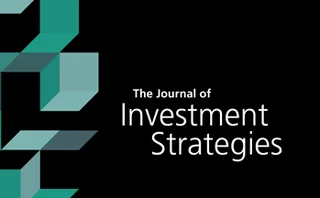Technical paper/S&P 500
Luxury watches: a viable alternative investment or mere speculative trend? An analysis of two decades before the pandemic
The authors analyse the investment performance of collectible watches for the period 1999 - 2020, finding they outperformed the S&P 500 index and other luxury collectible goods.
What’s so special about time series momentum?
We find that the buy-and-hold (B&H) strategy for the S&P 500 index (^GSPC) for January 1950–April 2019 had a significantly higher return than that produced by time series momentum (TSM). However, TSM was superior in terms of the Sharpe ratio due to its…
Can shorting leveraged exchange-traded fund pairs be a profitable trade?
In this paper, the authors examine if investors can profit from the underperformance of leveraged exchange-traded funds (ETFs) in long holding periods.
Rating migrations of US financial institutions: are different outcomes equivalent?
This study employs a competing risks approach to examine the rating migrations of US financial institutions (FIs) during the period 1984–2006.
Tail-risk mitigation with managed volatility strategies
This paper examines strategy performance from an investment practitioner perspective. Using long-term data from the Standard & Poor’s 500, the authors show that these strategies offer an improvement in risk-adjusted return compared with a buy-and-hold…
Beta hedging: performance measures, momentum weighting and rebalancing effects
In this paper, the authors discuss the various performance measures of beta hedging and offer a new synthetic criterion that accounts for both risk-adjusted returns and losses of trading strategy.
Dilated convolutional neural networks for time series forecasting
In this paper, the authors present a method for conditional time series forecasting based on an adaptation of the recent deep convolutional WaveNet architecture.
Covering the world: global evidence on covered calls
Typical covered call strategies may be decomposed, using a risk and performance attribution methodology, into three components: equity exposure, short volatility exposure and equity timing. This paper applies that attribution methodology to covered calls…
News-sentiment networks as a company risk indicator
This paper defines an algorithm for measuring sentiment-based network risk, to understand the relationship between news sentiment and company stock price movements, and to better understand connectivity among companies.
Cutting Edge introduction: Hedging dependence
Hedging dependence






